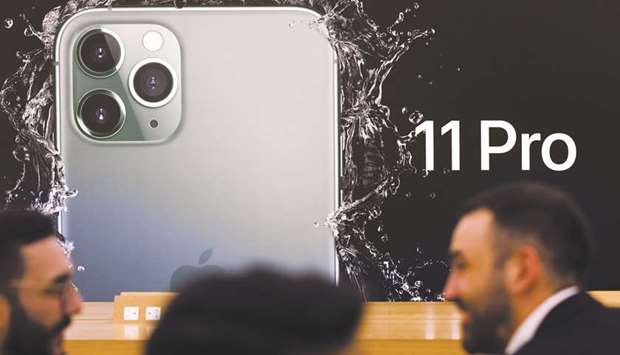It’s been a while but, with the iPhone 11 Pro, Apple Inc can once more claim the industry’s most capable smartphone cameras.
Apple’s priciest mobile gadget represents the culmination of a strategic rather than hardware redesign — one that places the focus squarely on a device’s innards. From the front, the Pro looks much like the 2017 iPhone X. But flip it around and you’ll find the best camera system Apple’s ever devised. Use it for a while and you’ll experience the best battery life too.
The triple-camera system can switch smoothly between lenses when zooming in and out, keeping exposure and image quality consistent.
With what Phil Schiller dubbed the “first iPhone good enough to be called Pro,” Apple has mostly matched the specifications of Android rivals like Samsung Electronics Co and Huawei Technologies Co, which have had multi-camera systems for years. But it’s also taken a step further through superior software implementation. Apple’s triple-camera system is ahead of the pack in switching smoothly between lenses when zooming in and out, keeping exposure and image quality consistent. That’s especially helpful in video, where the iPhone 11 Pro extends Apple’s established lead as the industry’s best mobile video camera.
It’s part of the California giant’s new approach of selling services and industry-leading enhancements to a loyal fan base. Faced with a stagnating smartphone market and a user base happy with its existing devices, Apple this year stopped reporting product sales numbers and launched numerous initiatives to augment its growing portfolio. Apple Card got it into banking alongside Goldman Sachs Group Inc, Apple TV+ entered it into the streaming wars against the likes of Netflix Inc, and Apple Arcade turned it into a serious games publisher.
Apple appears intent on reclaiming the mobile photography lead it lost when Google’s Pixel was released three years prior — because the camera is critical to any device, and the latest iPhones need an edge. That’s true even if you buy into expectations in some corners that iPhone demand will hold up despite global trade ructions and stiffening Chinese competition.
Most impressive among Apple’s photo upgrades is the new night mode, which takes two to three seconds to capture a burst of images and then combines them into one. It works just like Google’s excellent Night Sight on Pixel devices, except Apple’s solution is simpler as it kicks in automatically when needed. Apple’s night photo quality matches or surpasses rival systems including Google’s. That means the iPhone’s camera is again top of its class, turning a point of weakness over the past few years into a strength. But it’s no slouch in other key areas, either.
The new iPhone’s night photos are a huge leap forward, producing faithful colour and impressive dynamic range. The ultrawide lens also allows the capture of architectural photos that would otherwise be impossible.
The battery life of both iPhone 11 Pro models is superb, giving the user confidence it will last through a busy day without recourse to a charger — which couldn’t be said of their predecessors, the iPhone XS and XS Max. A fast charger is finally included in the box with the new Pro iPhones (though not with the basic iPhone 11 model), and Apple has also embraced the gesture-typing popular on Android devices with its iOS 13 keyboard.
The fluidity of Apple’s interface and animations remains unrivalled, aided by an upgraded A13 processor, which will let Apple build more augmented-reality applications while helping establish 4K video recording as the new iPhone standard. There’s still occasional sluggishness with navigation, which suggests next year’s iPhones might benefit from a greater memory allowance.
The iPhone 11 Pro shows off excellent exposure judgment even in challenging lighting. It boosts shadows and reins in highlights just enough to make for a detailed image without affecting the mood of the shot.
Apple doesn’t strictly need to win any spec or performance contest. Because many users feel locked in to their chosen ecosystems, it’s sufficient for Apple to demonstrate that its best iPhones are among the leaders. That has historically allowed the company to bypass the rush to reinvent the smartphone every year with cutting-edge tech like bezel-less displays, pop-up cameras or so-called waterfall edges that turn the sides of the phone into display. Apple has the luxury of choosing which new tech to adopt and when.
That being the case, the lack of fifth-generation networking in this year’s iPhone means Apple will miss out on a major upgrade cycle in China next year. Archrivals Samsung and Huawei already have 5G phones on the market.

An advert for the iPhone 11 Pro smartphone is displayed inside the Regent Street Apple store during a product launch event in London on September 20. The iPhone 11 Pro’s triple-camera system can switch smoothly between lenses when zooming in and out, keeping exposure and image quality consistent.


